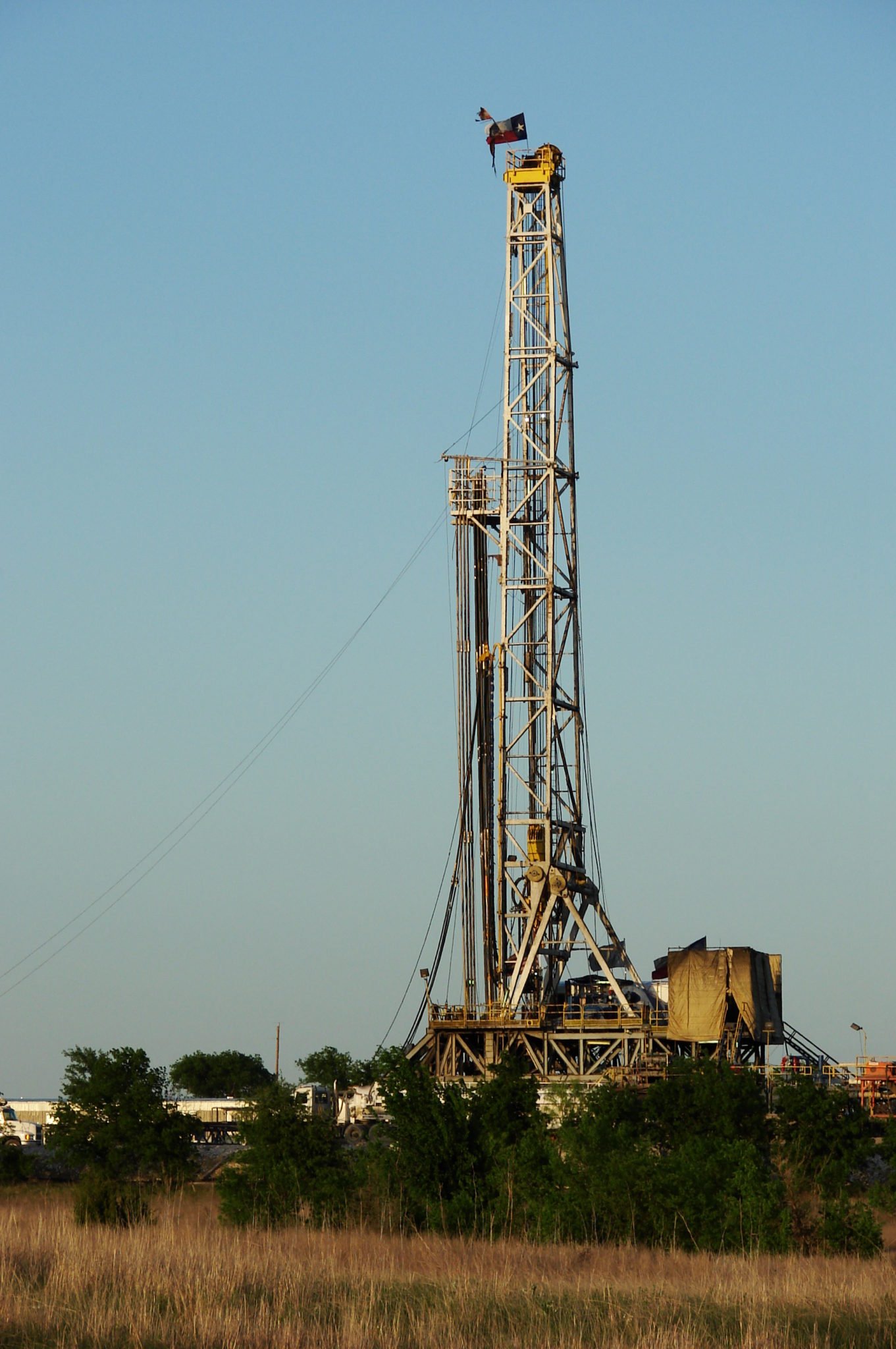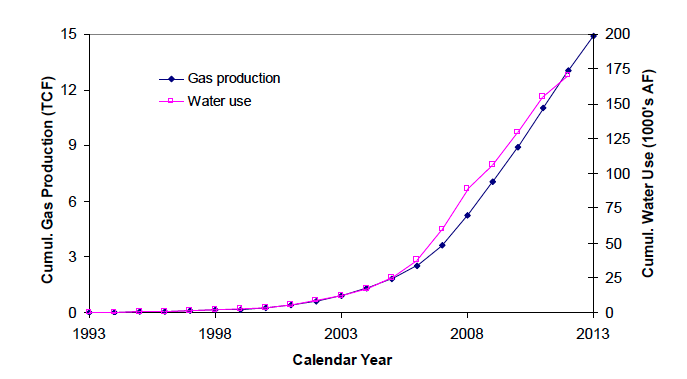
Study: In Midst of Drought, Fracking Industry Does Little to Recycle Water

A newly-published study of fracking-related water use in North Texas’ Barnett Shale provides new insights into what has been a murky topic. Authored by researchers at the University of Texas’ Bureau of Economic Geology and published in Environmental Science and Technology, the paper describes the Barnett Shale as an “ideal case” to try to get a better understanding of how much water is being used in fracking, the source of the water, how much is actually recycled and how much of the wastewater ends up in injection wells—pressing questions in drought-stricken Texas. “This is the first paper, I think, to take a comprehensive look at water use in one play,” said lead author, JP Nicot.
While researchers, journalists and regulators have slowly developed better estimates of how much water fracking consumes, especially at a regional or state level, less attention has been paid to where the water comes from and whether the industry is following through on promises to recycle and reuse water that returns to the surface after a frack job. What jumps out at me in this study is how little the industry has accomplished in using less water since the Barnett Shale took off in the middle of the last decade—even in the face of crippling drought.
Nicot found that the vast majority of water, about 92 percent, used to frack Barnett Shale wells in 2011 was “consumed”—never to return to the aquifer or reservoir again. Only around 5 percent of all the water has been reused or recycled “for the past few years.” The remainder, about 3 percent, came from brackish water sources. The figures suggest that the industry is making very little progress in conserving water, despite a push from regulators and lawmakers to encourage the practice.
At one time, Nicot said, companies were doing more to recycle.
“They started doing it even at a monetary loss,” he said. “Then they realized well it doesn’t seem like we are going anywhere with that recycling thing so let’s cut our losses and let’s not recycle anymore.”
“I know a lot of recycling companies,” he added. “They are kind of disappointed. A lot of people thought it would be the next big thing, the El Dorado. … The overall feel is that it’s not working as well as it could have.”
But so far, the industry does not seem too concerned about the drought. “Periodic droughts, characteristic of Texas climate, do not seem to control [hydraulic fracturing] water use in the Barnett play, which is more sensitive to the price of gas and economic activity,” Nicot wrote.
Indeed, the correlation between gas production and water use in fracking is nearly perfect. The more gas produced, the more water used, with little to no increase in efficiency.

Other interesting findings from the study:
- We know very little about the source of water used in Barnett Shale fracking. Nicot reports that data is “sparse” because “the industry is fragmented” and “water contracts are signed and expire in a very dynamic business environment.” Groundwater regulation in Texas is notoriously scattershot, spread over more than a 100 locally-run groundwater conservation districts, many of which don’t collect information on fracking-related water use. There is nothing in state law requiring that the industry report the source of its water.
- Nonetheless, Nicot is able to estimate that the Barnett Shale play relies roughly half on groundwater and half on surface water.
- Most of the groundwater comes from the Trinity Aquifer, one of the most depleted in the state.
- The potential for recycling in the Barnett Shale is much greater than in the Eagle Ford Shale or other shale plays. In many Barnett Shale wells, more water comes back to the surface than is injected in the fracking process. Such abundant “produced water” can be recycled or reused.
For now it appears to be business as usual, despite the hype about recycling and reuse.


